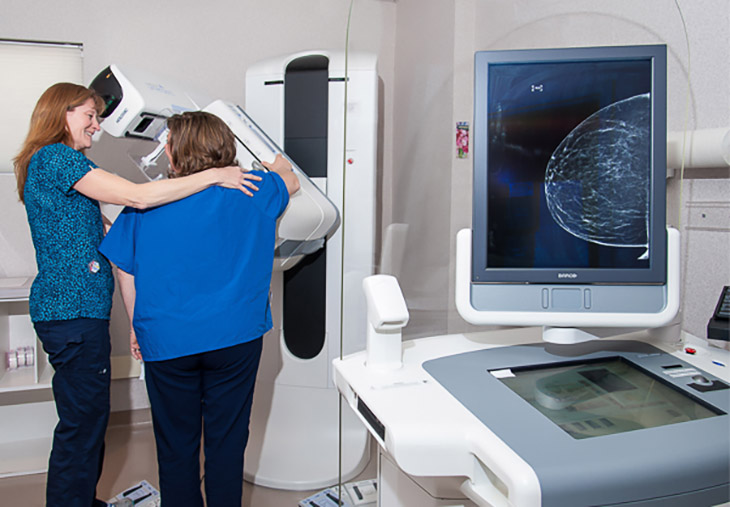
Scientists and health experts have witnessed how calcium deposits in breast tissue could actually be an indicator for cardiovascular disease risk. Hence, they designed a study that was focused on what’s known as breast arterial calcification. These are otherwise known as calcium deposits found within breast tissue. When women undergo a mammogram, these usually come out as white flecks on the findings.
The Importance of Mammograms
Routine mammograms can save women. These do more than spot breast cancer in its early stages. In fact, a new study somewhat shows how breast imaging may also serve as an early warning for women who are prone to heart disease.
Hence, this new study focused on what they know as breast arterial calcification. As mentioned, these are calcium deposits within the breast tissue appearing like white flecks on a mammogram. These can be early indicators of indicate precancerous cells. However, most found are often considered benign. Fact is, breast calcification happens often and becomes more prevalent as women get older. In fact, more than half of women have these deposits visible when they undergo mammograms. By the time they’re in their mid-seventies, more can be found.
There are several causes of breast calcification. Doctors have enumerated these: advanced age, high blood pressure, and type 2 diabetes. These are also risk factors for cardiovascular disease. Because this can be a sign of several health issues, scientists wanted to look into mammograms more and consider how these might be a good way to predict which of those have an increased risk for dire health issues such as heart attacks and strokes.
The Study
In order to get a more accurate account, researchers examined electronic health records of more than 5,000 women who were between the ages 60 to 79. They had no history of breast cancer or heart disease and had at screened for a mammogram between October 24, 2012, and February 13, 2015. The findings showed that there was breast calcification in 25.5 percent of the women.
After the mammograms were studied, the researchers followed the women for an average of 6.5 years. It was during this span of time that they had been able to point out 155 cases of what is known as atherosclerotic cardiovascular disease (ASCVD) events. Included on this list are heart attacks, strokes, and death brought about by cardiovascular issues. In a more broad perspective, they found 427 cases involving any type of cardiovascular disease such as heart disease, stroke, heart failure, and diseases of the peripheral arteries.
They saw that those who had breast calcification were 51 percent more likely to develop atherosclerotic cardiovascular disease and 23 percent more likely to experience any type of heart disease. The study was able to point this out and the results they saw were published March 15 in Circulation: Cardiovascular Imaging. Right now, it’s not part of medical standard practice for radiologists to note breast calcification on mammogram reports, especially when the deposits they see appear benign.
“Some radiologists do include this information on their mammography reports, but it’s not required,” shared the study’s lead author, Carlos Iribarren, MD, PhD, MPH. He belongs to the Kaiser Permanente Northern California Division of Research in Oakland. “We hope that our study will encourage an update of the guidelines for reporting breast arterial calcification from routine mammograms,” Dr. Iribarren also said.
Turning this into a practice might help better identify heart disease that may happen to women. The healthcare system needs this because the standard risk calculator that used to predict which people are most likely to develop or die from heart diseases happens to be more precise for men than for women, as noted by Iribarren.
In reality, Heart disease is the leading cause of death among women living in the U.S. This accounts for around one in five female deaths per year. The statistics came from the Centers for Disease Control and Prevention (CDC). Sadly, only about half of them are aware of the figures.
Doctors might be able to use another method of catching heart disease in women early on if they track breast calcification on mammograms. As they say, prevention is better than the cure. it’s easier to treat and prevent its serious complications that happen when these are caught late in the stage.
It also helps if doctors discuss these results with their patients. The calcification will help begin crucial conversations about heart-healthy lifestyle habits such as healthy eating, more excercise, and maintaining a healthy weight. This is what Sadiya Khan, MD said. She is a coauthor of an editorial accompanying the study and an assistant professor of medicine in the division of cardiology at Northwestern University’s Feinberg School of Medicine in Chicago.
“It is really important to note that the absence of breast arterial calcification did not translate into low risk and should not be falsely reassuring when no breast arterial calcification is present,” Dr. Khan explained. She then added, “Optimal risk factor control is equally important for all women with and without breast arterial calcification.”



